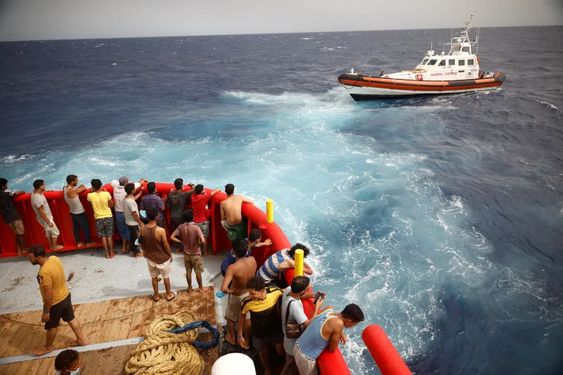World
Shipwrecks off the coast of Italy have left at least two people dead and hundreds missing

After two boats capsize off the coast of Lampedusa, the Italian coastguard reports that it has retrieved two bodies and saved 57 people.
Following two shipwrecks off the Italian island of Lampedusa, at least two people have died and many more are missing.
Following the sinkings, the Italian coastguard said on Sunday that it had retrieved two bodies and saved 57 people.
The International Organisation for Migration (IOM) claimed that three individuals were missing from a second boat after both of them sank in harsh weather on Saturday, and that about 28 people were reported lost at sea by survivors on one boat.
Both were flimsy iron boats that are thought to have left Sfax, Tunisia, on Thursday.
According to the Italian news service ANSA, one was carrying 48 passengers and the other 42.
After listening to the survivors, cultural mediators with the IOM estimated there were “at least 30 people missing,” according to press officer Flavio Di Giacomo, according to the AFP news agency.
On the nearby Italian island of Sicily, the city of Agrigento has launched an investigation into the shipwrecks.
Strong winds are complicating the situation around the island, and more than 2,000 individuals have arrived in Lampedusa in the last few days after being saved at sea by Italian patrol vessels and NGO organisations.
Emanuele Ricifari, the police chief in Agrigento, claimed that the people traffickers who sent migrants and refugees to sea would have been aware of the impending rough seas.
“Whoever allowed them, or forced them, to leave with this sea is an unscrupulous criminal lunatic,” he reportedly told Italian media.
The upcoming few days are expected to have rough seas. Hope they’ll stop. With this sea, it is sending people to their deaths, he declared.
Fire brigade and alpine rescue teams were ready Sunday to rescue some 20 persons trapped on a rocky section of Lampedusa’s coastline as the bad weather persisted.
They’ve been there since late Friday, when severe gusts caused their boat to be thrown into the rocks.
The Red Cross has given them food, drink, clothes, and emergency thermal blankets, but because of the heavy seas, the coastguard has been unable to save them at sea.
According to accounts in the media, if the winds don’t die down, rescuers may start winching the victims up the 460-foot-high (140-meter) cliff to safety.
The most dangerous passage in the world is across the Central Mediterranean from North Africa to Europe.
Di Giacomo reported that over 1,800 people have already perished trying it this year, which is over 900 more than in 2017.
“In actuality, that number is probably far greater. Numerous bodies are being discovered at sea, indicating that there may be many shipwrecks that go unreported, he said.
The number of bodies discovered has increased, especially on the so-called Tunisian route, which Di Giacomo claimed has gotten riskier due to the sort of boats being utilised.
He claimed that traffickers are sending migrants and refugees out to sea in “iron boats that cost less than the usual wooden ones, but are utterly unseaworthy, they easily break up and sink.”
In order for traffickers to reuse the engines, migrants frequently have their boats’ engines taken at sea.
SOURCE: NEWS AGENCIES AND AL JAZEERA
